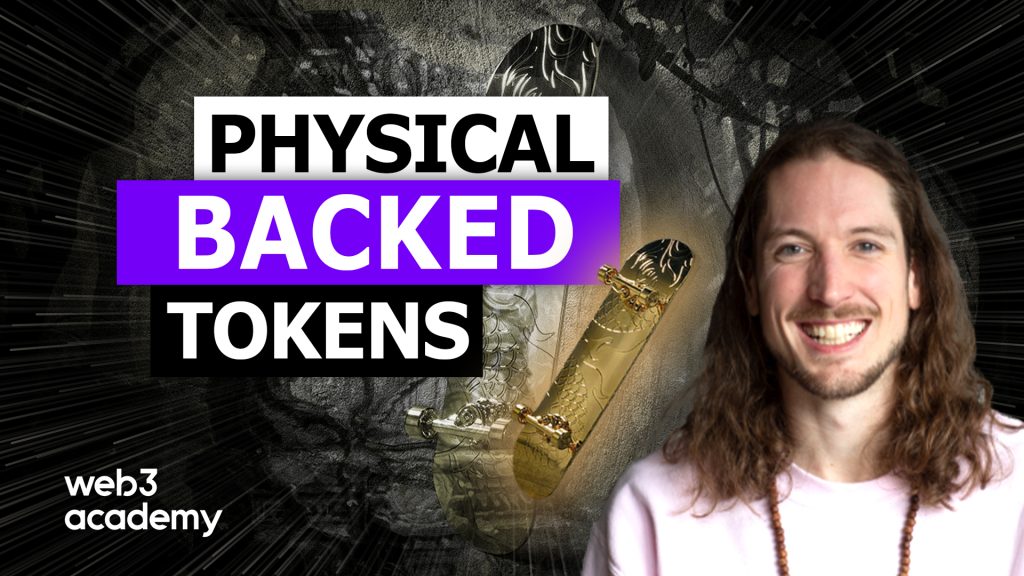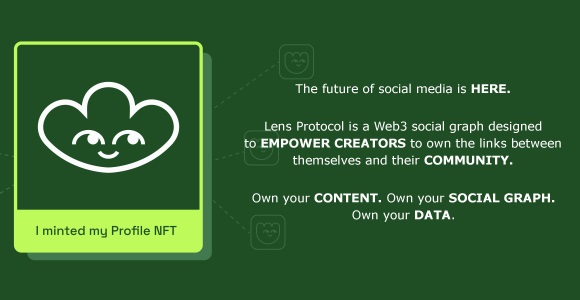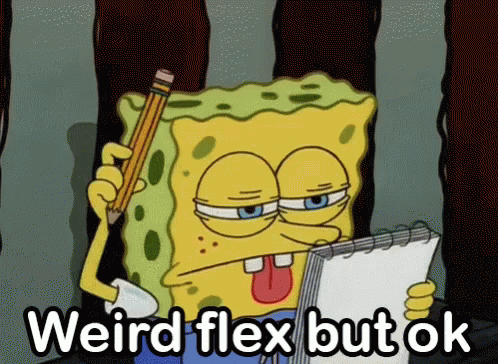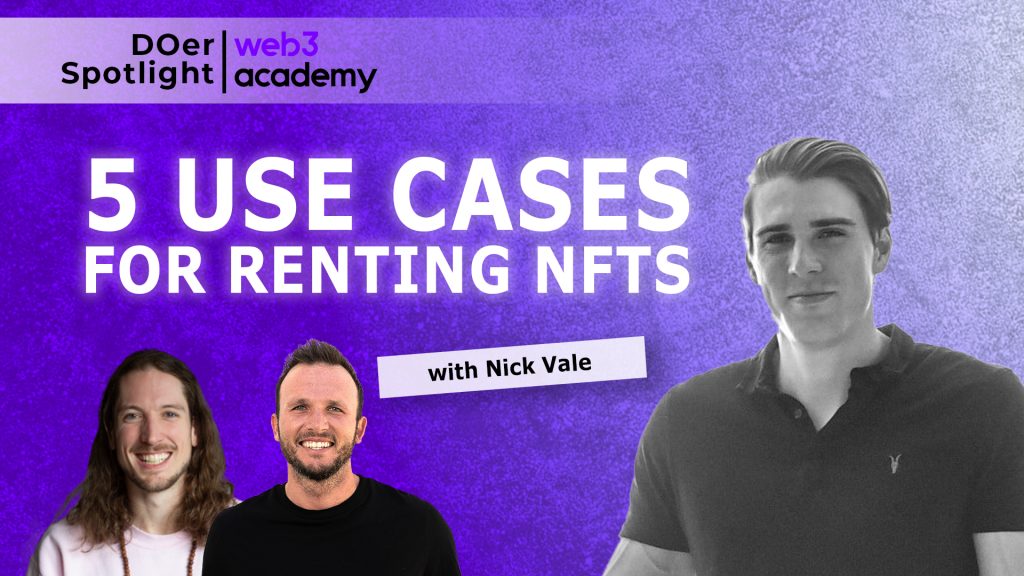
4 Ways Physical Backed Tokens Will Change the Future of Commerce
PBTs and Scan-to-Own Functionality Are Arguably the Biggest Innovations of Web3
No time to read? Get the low down on physical backed tokens through your favorite podcast platform 👇
GM web3 explorers!
Physical backed tokens (PBTs).
That’s the next evolution of phygital-NFT technology.
It enables simple ownership authentication, faster legal administration, brings the digital and physical worlds together, and much more.
These are just some of the global industries they’ll affect:
- Collectibles (such as figurines and sports cards)—valued at $402 billion globally in 2021 (expected to reach $1 trillion by 2032) 🎴
- Luxury goods (such as Louis Vuitton, Chanel, etc.)—valued at $269 billion in 2021 and are expected to reach $355 billion by 2027 👜
- Physical assets (such as watches and jewelry)—the jewelry market alone is worth $37 billion ⌚
In this Deep Dive, I’ll be covering the ins and outs of PBTs, the scan-to-own technology they enable, and how they’ll revolutionize commerce.
Let’s talk tokens 🪙
Tired of Elon’s memes? Then check out Lenster, the evolution of social networking 👀

What Are Physical Backed Tokens?
To understand PBTs, let’s first talk about phygital tokens.
Phygital tokens can be any NFT that’s tied to a physical object. For example, a recent podcast guest, Carly Reilly, shared that she plans to airdrop her top supporters an NFT which can be redeemed for a bottle of gin.
Once the token is redeemed that’s that. The physical bottle of gin and the NFT in the holder’s wallet aren’t linked. 🔓
Sure, the holder could show that they’ve redeemed the NFT, making it likely that the bottle of gin is real. But there’s no guarantee.
And in most situations that’s fine. But what if Carly’s gin becomes a collectible with long-term value? The problem here is that there’s no guaranteed way for the collector to prove its authenticity to the next buyer.
That’s one of the biggest unlocks of PBTs and something Azuki is pioneering through their gold skateboard collection. 👇
PBTs unlock scan-to-own functionality, meaning that if the physical object is sold or gifted to a new owner, the next owner can scan the same physical object to prove ownership. Once scanned, the owner will receive an NFT in their wallet corresponding to the physical item.
Without this link, it becomes difficult to value a physical object since it involves human intuition and biases that are challenging to overcome.
Instead, PBT technology ensures that there’s no broken link between the NFT and the physical object, ensuring its authenticity and history, and thus its value.
How Do PBTs Work?
PBTs are the evolution of Kong’s HaLo chips.
Azuki’s Discord moderators don’t share exactly what this means. However, one moderator shared that…
“the details of the partnership are private on both ends, I think the most accurate thing to say is that we are building in deep partnership with their technology, but this protocol doesn’t imply a new chip from Kong.”
Here’s what we do know, though 👇
HaLo chips take NFC (Near Field Communication) technology to the next level because, unlike standard NFC chips, HaLos can generate their own digital signatures—the reason PBTs can exist.
HaLo stands for Hardware-Locked Smart Contracts and they incorporate the scanning power of NFC chips with the functionality of blockchain.
When a HaLo chip is embedded in a physical item, it links the item to the blockchain forever—barring the removal of the chip or blockchain.
From what I can tell, Azuki’s BEAN (Blockchain Enabled Authentication Network) chip functions in an extremely similar way. However, Chiru Labs (the company behind Azuki) seems to be the driving force behind making PBTs an official ERC (Ethereum Request for Comments) standard.
In a nutshell, Chiru Labs describes ERC-5791 (PBTs) as a remixed ERC-721 NFT that standardizes how physical NFTs work.
While I’m sure we’ll learn more about the technical side over time, the vital part right now is understanding what the technology enables for physical items—for example:
- Decentralized item authentication, meaning anyone can authenticate the item without permission
- Ownership history tracking
- Airdrops for owning a specific item (or collection of them)
- Token-gated experiences
And much more.

What’s Next On the Horizon?
During my research, I came across an interesting proposal from Cameron Robertson and fellow web3 developers.
The proposal described a vision for the Ethereum Reality Service (ERS) which the development team believes could be the framework that we use globally for high-value, moveable assets.
Cameron and the team believe that the ERS could function in a similar way to the ENS (Ethereum Name Service), meaning we’d have one registry for all PBTs.
The ERS protocol would be an open-source public good allowing anyone to link an NFT to any physical object with a compatible chip.
Why the ERS?
It would allow users to mint PBTs alongside other digital assets such as ERC-721 and ERC-20 tokens for streamlined collection launches.
But for now, let’s talk PBTs 🗣️

QUESTION
What Do You Think Is the Biggest Unlock of PBTs?
- Guaranteed item authenticity
- The ability for businesses to create deeper community experiences
- Flexing physical assets and status online
- Streamlined administration
👉 Let us know by replying to this email. If we get over 100 replies Raul will stop supporting Arsenal ⚽
How PBTs Will Change The Way We Interact With Physical Items
PBTs simplify a host of functions that are otherwise extremely difficult to do without a digitally-linked token.
However, I believe that these four functions will benefit us the most:
- Simple Authenticity and Ownership History Verification
- Flex Utility
- Simpler Legal Administration For High-end Goods
- Unlocking Deeper Community Experiences
Here’s why 👇
1. Simple Authenticity and Ownership History Verification
Counterfeit products are an enormous issue worldwide with experts estimating that 80% of the world has handled counterfeit products—both knowingly and unknowingly.

Some estimates value the counterfeit market at $2 trillion annually or 3.3% of global trade. In fact, the fake goods market is actually growing faster than the luxury goods market itself, increasing by 10,000% over the last two decades.
On the surface, counterfeit goods only affect the profit margins of luxury brands. But it goes much deeper with many companies counterfeiting electronics and skin care products which could lead to serious injuries.
Fake goods also heavily affect the secondary sales market.
In Thailand, we have many high-end fakes that are almost indistinguishable from real products. If someone were to sell these counterfeits as the real thing, the buyer would have no idea unless they were professionally appraised. Even then, it relies on the knowledge and experience of the appraiser.
The problem is even bigger when it comes to high-end art.
Many valuable paintings and artworks aren’t verified by the artists themselves. But instead, rely on verification by galleries and expert appraisers.
This process is extremely difficult for appraisers as they have to consider:
- Ownership information
- The locations where the art is held
- How the artwork was acquired
- Exhibition history
- Marks and inscriptions
- Invoices
And many other factors, adding to a lengthy and expensive process that still doesn’t guarantee authenticity.

It’s also just as difficult to verify ownership of an item—which can make a substantial difference to the value of an item. For example, any shoes or clothing that athletes wear on the field are more valuable than memorabilia replicas.
How much would a pair of football boots be worth if Lionel Messi wore them? What happens if it was a t-shirt from a championship-winning game?
Such items represent more than just physical objects, they represent specific moments in time that have value to many collectors.
And the only way you could verify authenticity and ownership with 99% accuracy is if the athlete themself handed the item to you with signed documents and attestations.
But there’s always the what-if factor.
Instead, PBTs reduce the need for human appraisal and guarantee the authenticity and ownership history of the item in seconds, taking the guesswork out of appraisal.
2. Flex Utility
Human beings are all about flexing. It’s a way to establish authority and build connections, but most ways of doing this are seen as cringe.
For example, if someone was driving their Lambo, you wouldn’t think they were showing off. Instead, you’d probably admire the vehicle or maybe wish you had one—if you don’t like Lambos replace it with an item you wish you had.
But now, say that person was always uploading Instagram pictures posing with their Lambo. The first reaction most people would have is, “Wow, look at this poser.” Because it’s obvious that they’re trying to show off their car.
On top of this, it’s easy to assert that the Lambo picture is rented because there’s no good way to prove ownership. The owner could stand there with a receipt, but that’s just cheesy.

It’s also not just about wealth anymore. We’re seeing a shift towards scarcity and being an insider become more valuable than money and assets.
That’s why PBTs allowing people to showcase all kinds of “proof NFTs” is a huge unlock.
And well-known web3-native, gmoney, started his clothing label (9dcc) for that exact reason.
9dcc’s first release is a simple, NFC-chipped black t-shirt, but its flex utility is extreme. There were only 1,111 NFTs (as of OpenSea) released in the first drop, meaning owners can flex their insider status.
On top of this, owners could use these t-shirts to issue their own proof of attendance and proof of interaction NFTs. So not only can owners flex their expensive t-shirts, but they can also flex their network (and allow others to flex their POAPs).
Talk about flex-ception 🤯
Another way PBTs enable flex utility is in metaverse fashion.
A pioneer in this space—Meta Factory—is working on interoperable digital wearables that can not only be used across different platforms but also redeemed for real-life products.
Fashion is expression. It’s a way for people to show who they really are. So there’s no doubt in my mind that clothing PBTs will be a huge industry in the near future.
Soon your digital identity will showcase everything you want others to know about you ✌️

SOCIALS
Meme of the Week
3. Simpler Legal Administration For High-end Goods
Legal administration for high-value assets can be difficult and expensive.
That’s why Mattereum aims to simplify this process through PBTs and what they call the Mattereum Asset Passport (MAP).
It functions slightly differently from the PBTs we’ve discussed as it bakes all the legal requirements into the PBT itself. For example, each Mattereum Trustable NFT comes with legal frameworks for dealing with item disputes as well as all the verification documents to prove authenticity.
Essentially, Mattereum includes digital copies of all important physical documents, such as invoices, contracts, and all the other appraisal proofs we mentioned above.
Each of Mattereum’s NFTs also comes with certification and warranties from third parties to support an item’s authenticity.
Some of the items Mattereum is turning into PBTs include:
- Gold bars. The bars themselves are kept in an internationally renowned vault while the NFT (which holds a legally enforceable title) can be easily traded.
- Fine wines and whisky. Like gold, the wines and whiskies remain in professional cellars and vaults unless the NFT holder wants to store the items themself.
- Historic instruments. Mattereum has tokenized instruments worth millions of dollars. But the interesting part is the functionality that can be added to the physical object—for example, the NFT could state who is and isn’t allowed to play the instrument for a special event.
They’re also in the middle of tokenizing real estate, but it’s not clear how their version of PBTs will function in that regard.
4. Unlocking Deeper Community Experiences
NFTs and public blockchains allow brands to create digital and physical experiences for holders of particular tokens.
For example, Forgotten Runes, a popular NFT game, recently created a digital Halloween experience for its holders and NFT holders from ten other blue-chip communities.

They didn’t have to ask for permission from other communities, all they had to do was create the relevant smart contracts and announce the experience.
While the example focuses on purely digital NFTs, the same can be done with PBTs.
For example, gmoney could reward his top supporters based on how big their own network is. Remember, 9dcc’s t-shirts allow holders to give out their own POAPs.
Alternatively, gmoney could also create an experience for 9dcc holders who’ve attended certain events or hold x number of 9dcc items.
When it comes to PBTs, the way people can create community experiences is pretty much limited by their imagination.
- Token-gated communities
- Exclusive Discord channels
- Real-life quests
- IRL events
- Early product access
- Collaborations
- Giveaways
These are just some of the functions that PBTs enable, all in a trustless and permissionless manner.
🤝 Together with Unlock Protocol: Making Web3 Memberships Easy

If you’re an NFT creator, you can’t rely on royalties when they’re not guaranteed.
You need recurring, predictable revenue—and the best way to generate this in web3 is with NFT memberships and subscriptions.
But what if you don’t have the time or resources to create custom smart contracts from scratch?
Unlock is the answer 🔓
👉 LEARN MORE 👈
Let the Lines Be Blurred
PBTs have the power to change how we interact with physical items as well as the digital experiences we can create and participate in.
They remove the need for expensive and lengthy appraisals, enabling instant guarantees of authenticity. They remove the need for lawyers, paperwork, and bureaucratic red tape. And they can verify the true value of an item without debate.
But they’re also the key to bringing the digital and physical worlds closer together.
Right now, people spend an average of 403 minutes on the internet each day. But I’d guess that most of that time is spent mindlessly scrolling through social media when your community members could be interacting with your brand!
Above all, PBTs remove the red tape that comes with transacting physical goods while enabling deeper community connections.
Sounds like a win in my books.
ABOUT THE AUTHOR
Myles O’Bery
Content creator and crypto connoisseur at Web3 Academy
Find him: Twitter

FOR THE DOERS
Take Action & Level Up
LEARN
Take our FREE Web3 Rabbit Hole Course to get up-to-speed on the foundational components of Web3 so you can confidently build, work, or use the fastest growing technology in history.
JOIN
Head over to the Web3 Explorers Club to get involved in November’s community-cultivated mastermind!
READ
Now that you know about the power of PBTs, it’s the perfect time to learn about Creator Monetization and NFT Use Cases

LEVEL UP WITH WEB3 ACADEMY
Subscribe: Apple Podcast | Spotify | Youtube
Follow: Twitter | TikTok | Instagram | Facebook











